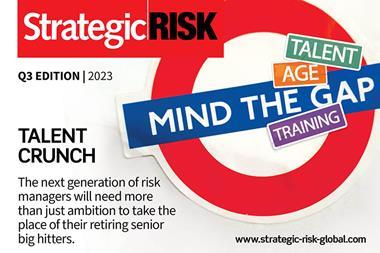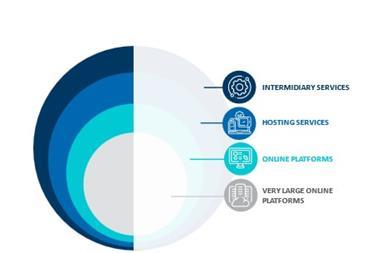Fallout from a global recession, lax cyber security and an uptick in litigation are other key risk drivers for 2023
There are multiple factors driving the possibility that a company and its board of directors may be sued by investors or other stakeholder groups in 2023, according to Allianz Global Corporate & Specialty (AGCS).
A poor financial performance or even insolvency amid economic uncertainty and the prospect of a global recession, a lack of robust cyber security and governance processes, or an inadequate or non-compliant response to ESG issues are among the key risk trends in the D&O insurance space.
Despite a downward trend in new filings, US class action securities litigation remains a key concern, particularly around mergers, while cryptocurrency companies and exchanges are subject to increasing activity, the insurer’s annual D&O report also notes.
“The recent decline in the number of filed securities and class actions in the US, coupled with an influx of new entrants, has created a more favorable market for corporate buyers of D&O insurance after double-digit percentage premium increases across key markets in 2021,” says Vanessa Maxwell, global head of Financial Lines at AGCS. “However, there is still a lot of risk facing insurers as macroeconomic issues and a potential slowdown loom, conditions which typically lead to an uptick in D&O claims.
”Inflation is likely to influence future claims through larger settlements. Cyber risk remains at an elevated level and is now seen as a core duty of D&Os, with increasing scrutiny on how they respond.
”Meanwhile, ESG-related liabilities – whether it is inadequate action on climate change or diversity and inclusion issues – can potentially become significant exposures for D&O insurance as well.”
Gloomy economic outlook
For many countries, the economic outlook for 2023 is doom-laden with recession risk rising. Plunging growth rates, surging inflation, the energy crisis, continuing stock market volatility and ongoing supply chain issues are monitored closely by D&O underwriters as they could cause liquidity and profitability squeezes in many sectors and fuel rising insolvencies.
“More than ever, D&O underwriters are focused on the financial strength of a company, particularly around liquidity. With global economic uncertainties progressing, carriers are closely monitoring if the trend of increased Chapter 11 filings (in the US), which impact both public and private companies will continue in 2023,” says Katie Fioretti, global head of Management Liability Commercial at AGCS.
Half of the countries analyzed by Allianz Research recorded double-digit increases in business insolvencies during the first half of 2022, with the SME sectors in the UK, France, Spain, the Netherlands, Belgium and Switzerland accounting for two thirds of the rise. Overall, insolvencies are expected to increase by +19% in 2023 globally.
An economic downturn typically brings a higher risk of D&O claims: A study by Marsh found that between 2005 and 2007 the firm received an average of 200 to 300 D&O claims in the UK. With the onset of the financial crisis, claims notifications rose by 75% to around 500 in 2008, peaking in excess of 1,600 in 2012.
“The likelihood that a public company will be sued in a securities class action increases when financial performance is poor, a company’s share price drops or there is a risk of bankruptcy. In such scenarios, investors may argue that the company failed to disclose the challenges it was facing to maintain its earnings guidance, driving a potential increase in D&O claims,” says David Van den Berghe, global head of Financial Institutions at AGCS.
Cyber risk and data protection responsibilities
Issues such as data security and information protection are now core areas to watch for directors, the report notes. Investors increasingly view cyber security risk management as a critical component of a company’s board risk oversight responsibilities.
As fiduciaries, board members are therefore expected to develop and maintain accountabilities for IT security before, during and after any cyber incident. Alleged failures can be seen as a breach of duty.
“Around the world, directors have already been called to account, including in derivative and direct litigation, due to their alleged failures to institute appropriate governance and protection against cyber security risk,” says Rishi Baviskar, Global Cyber Experts Leader at AGCS’ Risk Consulting team.
“Moreover, major breaches experienced by publicly traded firms have damaged investor confidence, causing share price drops, and thereby becoming ‘events’, which again can give rise to costly class action securities litigation.
“Boards therefore need to initiate and implement a cyber risk management structure that covers the entire organisation.”
Know your ESG responsibilities
Regulatory action or litigation risks due to ESG-related issues are another major concern for boards, driven by increasing reporting and disclosure requirements around such topics, which could trigger claims in case of an inadequate response or non-compliance.
In addition, companies and their boards also face the prospect of increasing litigation from environmental or climate groups, activist investors or even their own employees.
Climate change litigation is increasing, with over 1,200 cases filed internationally in the last eight years, compared with just over 800 cases between 1986 and 2014.
Most of these were filed in the US, but there are increasing filings at international courts or tribunals: 2021 saw the highest annual number of recorded cases outside the US.
Another risk is misrepresenting ESG credentials or achievements – so-called greenwashing – which can also lead to regulatory action, litigation, and shareholder suits.
“ESG-related information is increasingly becoming a key checkpoint for insurers when it comes to the risk assessment of a company. Those companies with strong ESG frameworks and governance will likely find insurers more willing to offer capacity,” says Maxwell.




















No comments yet